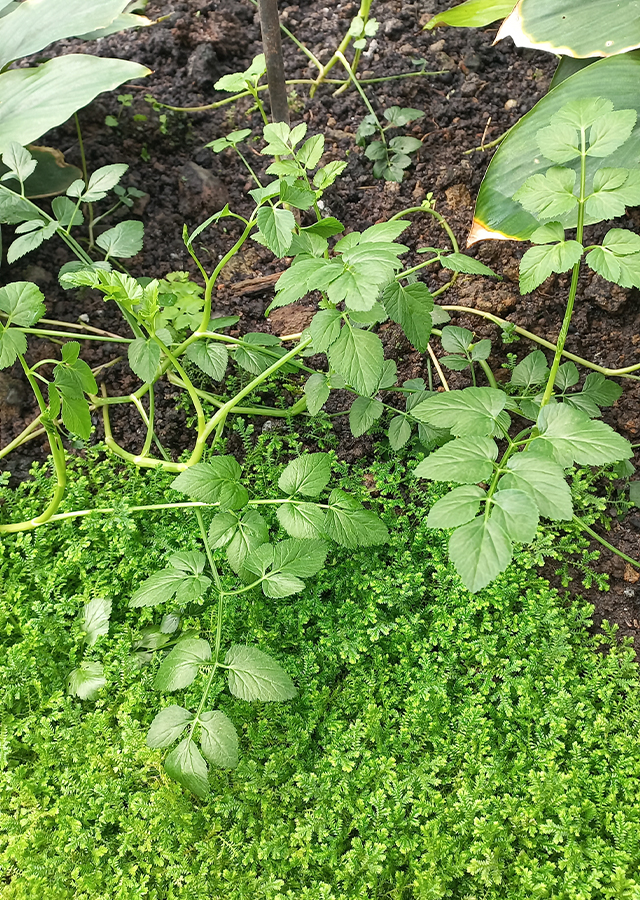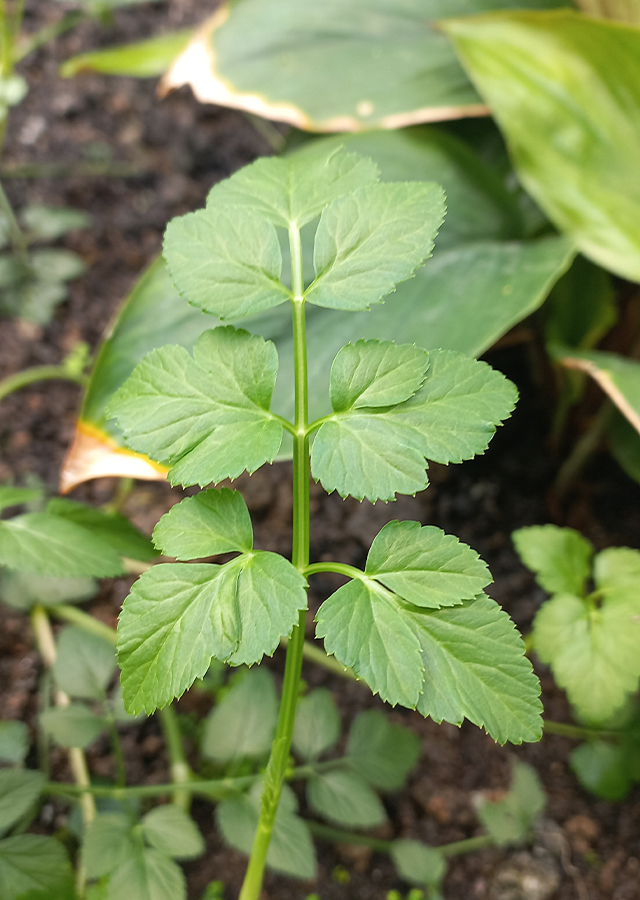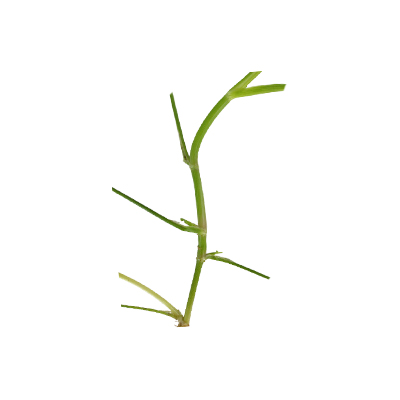Water Dropwort
Oenanthe javanica (Blume) DC.
Apiaceae
Location in our garden
Green House



Synonym
Cyssopetalum javanicum (Blume) Turcz.
Oenanthe japonica (Miq.) Drude
Dasyloma corticatum Miq.
Habitus
Herbaceous. An erect, perennial plant growing from 10 - 150 cm tall, has creeping stolons by which it spreads vigorously, often forming large clumps
Part Used
Leaves
Stem
The Whole Plant
Growing Requirements
Need Shade
Habitat
Aquatic
Wetland
Overview
Oenanthe javanica is of Asiatic origin and since ancient times has been widespread in South, South-East and East Asia, from Pakistan to Japan and Taiwan, and from northern China down to the tropical parts of Australia (Queensland). The plant is harvested from the wild for local use as a food and medicine. It is occasionally cultivated in many regions from the tropics to the warm temperate zone as a food and is sold in local markets. Water dropwort is one of the most popular traditional vegetables in South-East Asia. It is a good alternative for celery, with the additional advantages that it is easier to grow and can be maintained around the year without replanting.
Vernacular Names
Selom (Malay), Phakchi-lom (Thai), Rau cần, rau (Vietnamese), Ongsoy (Philippines), S'ii s'aangz (Laos), Nase (Papua New Guinea).
Agroecology
Oenanthe javanica is found from the warm temperate zone to the tropics, where it can be found at elevations up to 3,400 m. It grows best in areas where annual daytime temperatures are within the range of 10 - 30 °C, but can tolerate 4 - 32 °C. It prefers a mean annual rainfall in the range 2,000 - 3,000 mm, but tolerates 1,500 - 3,500 mm. Requires a wet fertile soil or shallow water and a sunny position. Prefers a pH in the range of 5.5 - 6.5, tolerating 4.5 - 7.
Morphology
- Stems - terete, erect or ascending from a creeping base, hollow, 10-100 cm long, much branched, sometimes tinged with red.
- Leaves - alternate; petiole up to 12 cm, often sheathing over most of its length, with membranous margins; leaf-blade oblong to ovate in outline, 5-30 cm × 5-15 cm, pinnate to tripinnate; ultimate segments ovate to narrowly oblong, 0.5-7 cm × 0.3-3.5 cm, with serrate or entire margins, above dark green and dull, beneath lighter coloured with transparent nerves.
- Flowers - small, white; calyx teeth 5, distinct, acute, dark green, nearly 0.5 mm; petals 5, obovate, up to 2 mm × 1 mm, glabrous; stamens 5, patent, filaments white, anthers small, yellowish brown; ovary glabrous; style long, persistent.
- Fruits - schizocarp, glabrous, mericarps 2-3 mm × 0.5-1 mm, with swollen ribs, the marginal ones much more prominent than the dorsal ones.
Cultivation
- Propagated by seeds - sow spring in a nursery seedbed. Germination is erratic. When they are large enough to handle, prick the seedlings out into individual pots and plant them out when 15cm or mor tall.
- By division at any time - large divisions can be planted out direct into their permanent positions. We have found that it is better to pot up the smaller divisions and grow them on in light shade in a frame until they are well established before planting them out.
- By layering and stem tip cuttings - any part of the stem roots easily.
Chemical Constituents
Coumarins (xanthotoxin, bergapten, isopimpinellin, sioimperatorin, imperatorin, columbianadin, 5-hydroxy-8-methoxypsoralen, 6,7-dihydroxycoumarin, scopoletin), polyphenols, flavonoids and flavonoid glycosides (apigenin, isorhamnetin-3-O-β-D- glucopyranoside, quercetin, isorhamnetin-3-O-galactoside, afzelin, persicarin, isorhamnetin, hyperoside, luteolin, kaempferol, rutin, nictoflorin, quercetin-3-L-rhamnoside), phenolic (neochlorogenic acid, chlorogenic acid, caffeic acid, gallic acid, α-tocopherol, lunularin, p-hydroxyphenylethanol ferulate, 5-p-trans-coumaroylquinic acid, carvacrol, ferullic acid, catechin), essential oil (β-caryophyllene, δ-cadinene, β-bisabolene, α-terpinolene, γ-terpinene, α-amorphene), butanedioic acid, β-sitosterol, falcarindiol.
Traditional Medicinal Uses
- The whole plant is depurative, febrifuge and styptic. A decoction is used in the treatment of epidemic influenza, fever and discomfort, jaundice, haematuria and metrorrhagia.
- The stem is chewed and swallowed to ease a cough.
- The leaves are chewed with wild ginger and traditional ash salt as an antidote to poisoning.
- The leaves are rubbed onto the forehead in order to ease a headache.
Part Used
Reference Sources
- Fern, Ken. Useful Tropical Plants. (2021). Oenanthe javanica. https://tropical.theferns.info/viewtropical.php?id=Oenanthe+javanica. 11-10-21
- Plant Resources of South East Asia. Oenanthe javanica. https://uses.plantnet-project.org/en/Oenanthe_javanica_(PROSEA). 11-10-21
- Hindawi. A Review of Oenanthe javanica (Blume) DC. as Traditional Medicinal Plant and Its Therapeutic Potential. (2019). Oenanthe javanica. https://www.hindawi.com/journals/ecam/2019/6495819/. 11-10-21


